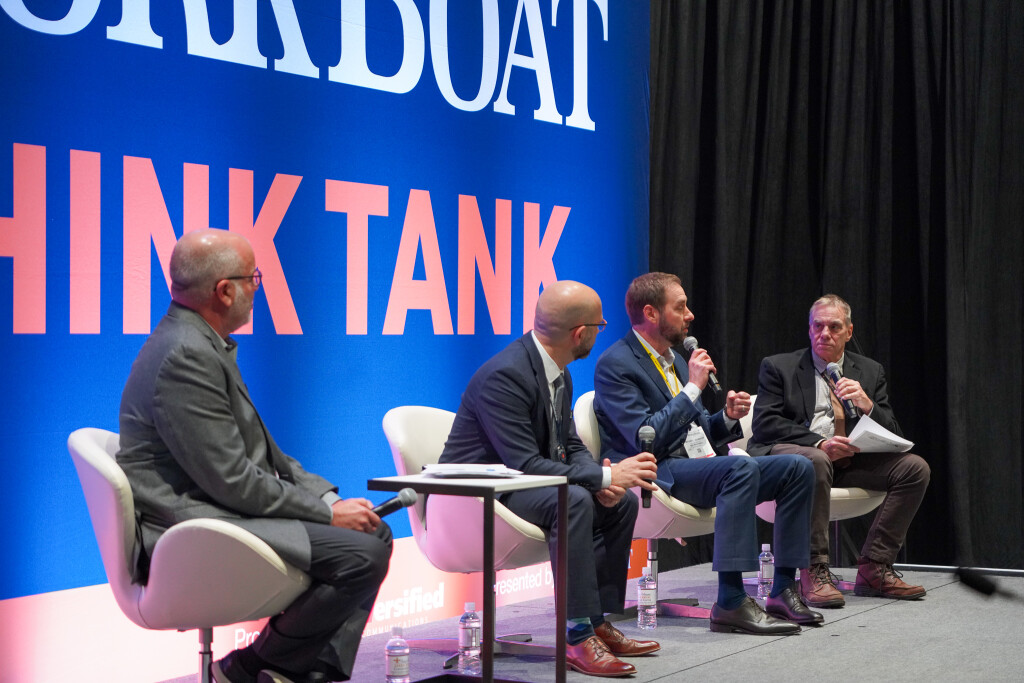Autonomous systems are growing in the maritime industry, offering benefits in efficiency and safety as sensor and control systems are integrated, expert panelists explained at Wednesday’s International WorkBoat Show.
“Autonomy in general is moving our industry into where it needs to be for the 21st century,” said Michael Gordon Johnson, CEO and founder of Sea Machines, a builder of autonomous vessel systems.
Now established in missions including survey work and guard duty, “now you’ll see it moving into other areas,” said Johnson. “Tugs is one area where there’s a lot of low-hanging fruit” – benefits to be gained by incorporating autonomous functions, he said.
Two years ago, propulsion supplier Hamilton Jet had systems on 50 autonomous vessels. The tally is now up to 200, “with another 200 in the pipeline,” said Tom Latham, general manager Americas with Hamilton Jet. “That’s the big difference,” adoption.”
Autonomy can create some new jobs in the maritime sector, panelists said.
“People associate autonomy with un-crewed,” said Olivier Cadet, senior vice president global operations for Kongsberg Maritime Inc. But “a human is in the loop,” from system design to operations and troubleshooting,” said Cadet.
“I saw the need to do this” with bringing in software engineers from other industries to join Sea Machines’ maritime projects, said Johnson. Now software specialists are working with traditional maritime trades, as when Sea Machines mounted its latest autonomous “odyssey,” a 1,000-mile voyage steering a tug around Denmark with help of maritime union members, said Johnson.
Recent growth and trends show autonomous systems making clear gains in “skipper assist” roles, said Latham.
Vessel crews “have so much work to do, they (operators) would rather have them doing that than staring out a window,” said Johnson.
Building safety and reliability into navigation systems means layering ship sensors – a vessel’s autonomous eyes and ears – into “domain awareness,” Johnson explained.
With 25 operators now using Sea Machines systems, there have been no major challenges from regulators. Johnson said autonomy is moving into a “common-technology adoption cycle,” with widening acceptance of a once-exotic concept – similar to how the advent of dynamic positioning for drilling vessels enabled deepwater oil production.




